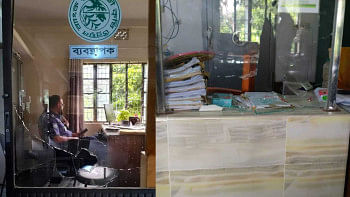Why must Bangladeshis bear huge medical costs?

Although we have been well aware that Bangladeshis, especially those in lower income brackets, have to bear an enormous financial burden when they seek healthcare services, to know that we are well behind our South Asian neighbours is a jarring wake-up call. A recent study by the World Bank found that out-of-pocket-spending (OOPS) accounted for 73.9 percent of health expenditure in Bangladesh. Meanwhile Nepal's was 58 percent, India's 55 percent, Pakistan's 54 percent, Sri Lanka's 46 percent, and Bhutan had the lowest OOPS at 18 percent.
What this tells us is that Bangladesh has done precious little in terms of investing in primary healthcare, which is a fundamental element for a country's social development. The media has extensively reported on how overburdened and understaffed our public hospitals are, as well as on the pathetic state of the upazila health complexes that are supposed to provide citizens with primary healthcare. In remote areas such as the chars, the situation is even more frightening, with no emergency care for miles leading to avoidable deaths, especially of expectant mothers. As government hospitals are often inaccessible due to being overburdened, people seek healthcare in private clinics and hospitals and have to pay exorbitant bills, often by selling assets such as jewellery or land or by borrowing money. In fact, from 2000 to 2017, the OOPS more than quadrupled, says the WB study. The report further found that the eighth five-year plan concludes that "rising out-of-pocket-spending undermines poverty reduction efforts."
We agree with the WB that the government must make major health financing reforms and significantly increase public financing for the health sector. It is disappointing that, while the government has embarked on huge, costly, infrastructural projects when it comes to developing the health sector, the efforts have been grossly inadequate.
Bangladesh should adopt the examples of other countries that have successful national healthcare systems and incorporate these models in our own health sector. As suggested, Indonesia is a good example where primary healthcare is part of a new national insurance system which makes basic medical care and facilities available to all citizens. But even within Bangladesh, there have been successful private models that can easily be replicated in a national health plan. Health facility budgets at upazila health complex facilities and union health and family welfare centres must be ensured and increased according to the needs of the local population. As recommended by the study, the government can also explore a capitation payment model in primary healthcare where a fixed remuneration is given in advance to the provider for each patient and per unit of time, regardless of the extent or amount of healthcare services the patient avails.
Access to healthcare is a basic right of all citizens. It is unacceptable that people either suffer in silence when they are sick or are forced to sell their limited assets or borrow money to pay hospital bills. By investing in a functional, efficient, and corruption-free healthcare system, the government will gain unprecedented boosts to its developmental goals – which we desperately need.


 For all latest news, follow The Daily Star's Google News channel.
For all latest news, follow The Daily Star's Google News channel. 









Comments